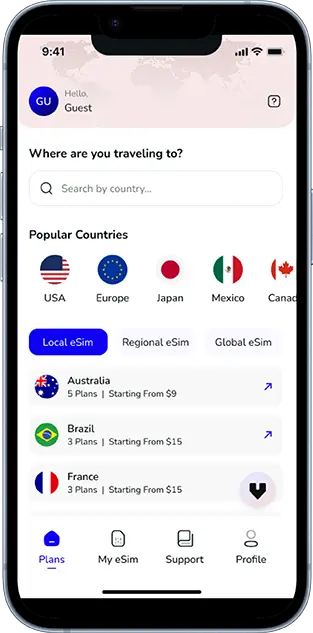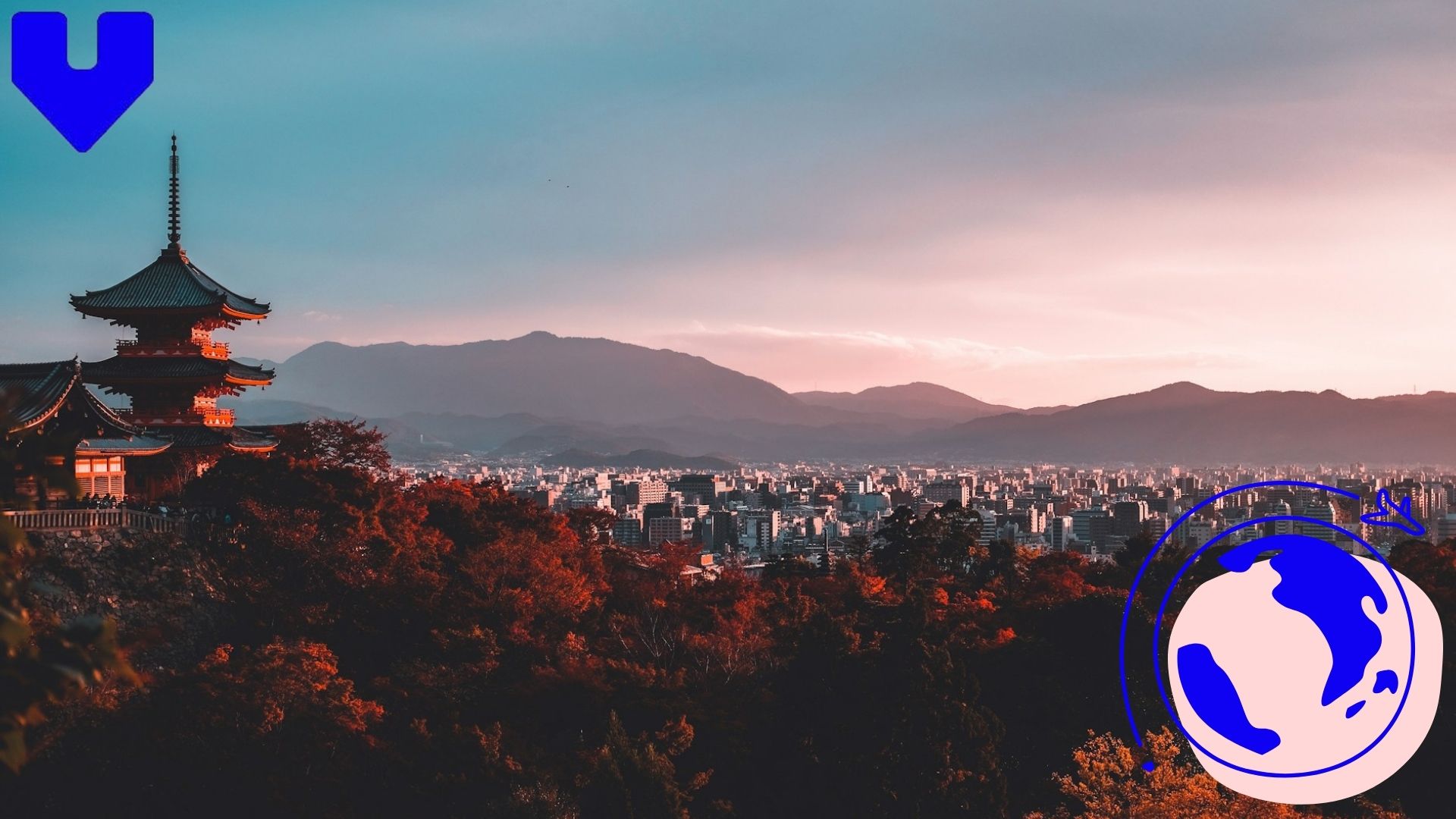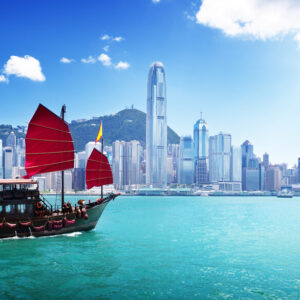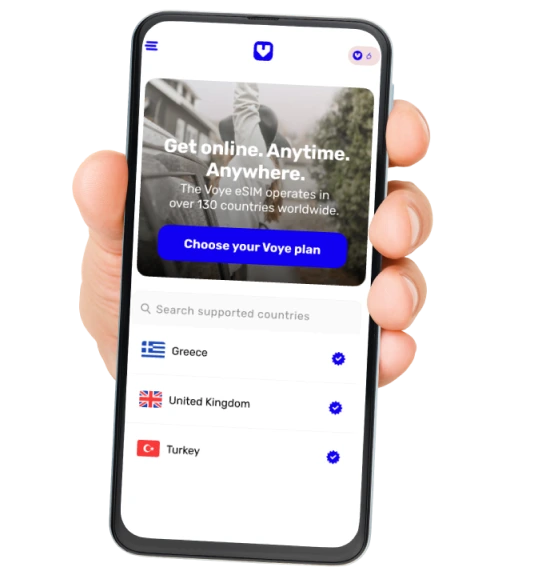Note that iPhone devices from Mainland China aren’t eSIM compatible. Also iPhone devices from Hong Kong and Macao aren’t compatible (except for iPhone 13 Mini, iPhone 12 Mini, iPhone SE 2020 and iPhone XS)
Quick Overview
- When to go by season and city type
- Money & payments (cash vs. card, ATMs, exchange tips)
- Where to stay (first-timer neighborhoods in Tokyo, Kyoto, Osaka, Hokkaido, Fukuoka)
- Navigation (IC cards, subways, Shinkansen, regional passes, apps)
- Food culture (how to order, must-try dishes, “old shop” hunting)
- Experiences & sample itineraries (7-day, 10-day)
- Connectivity (how eSIM works, Japan eSIM from Voye Global, plan sizing)
- Korean-specific tips (language, sockets/voltage, etiquette crossover)
- Packing checklist & FAQs
1) When to Go (Season-by-Season)
- Spring (Mar–May): Mild temps, cherries and fresh greens. Tokyo, Kyoto, Kanazawa sparkle. Book early.
- Summer (Jun–Aug): Rainy early summer; festivals (matsuri), fireworks, beach escapes (Okinawa). Air-con everywhere, but pack light fabrics.
- Autumn (Sep–Nov): Comfortable temps, famous foliage (Kyoto, Nikko, Hakone). Ideal for first-timers.
- Winter (Dec–Feb): Powder snow in Hokkaido/Nagano, onsen towns (Hakone, Kusatsu). Illuminations in big cities.
Tip for weekenders from Korea: Consider Fukuoka (quick flight, ramen & yatai), Osaka/Kyoto combo, or Sapporo for winter food and snow.
Stay Online from the Gate
Activate your Japan eSIM by Voye Global before takeoff and land connected.
2) Money & Payments (KRW ↔ JPY)
- Cash vs Card: Cards are widely accepted in chains, hotels, and transport hubs, but carry some cash for small eateries, shrines, markets.
- Where to Exchange: Competitive rates at KEB Hana/major Korean banks before departure or 7-Bank/JP Post ATMs in Japan (often better than airport counters).
- ATMs: Look for 7-Eleven (Seven Bank), Japan Post, and Lawson ATMs—reliable for foreign cards.
- IC/Transit Cards: Load cash onto Suica/PASMO/ICOCA; use for trains, buses, convenience stores, some vending machines.
- Tipping: Not customary; a polite thank you is enough.
- Budgeting Roughly (per day, excluding shopping):
- Backpacker: ¥7,000–¥10,000
- Comfort/Mid: ¥12,000–¥20,000
- Upscale: ¥25,000+
Pro move: Bring a chip-enabled credit card and one backup. Notify your bank you’re traveling to Japan.
3) Where to Stay (First-Timer Friendly)
Tokyo
- Shinjuku: Lively, major transport, tons of food.
- Shibuya: Trendy, central, great for shopping/nightlife.
- Asakusa/Ueno: Classic vibe, temples, museums, easier on budget.
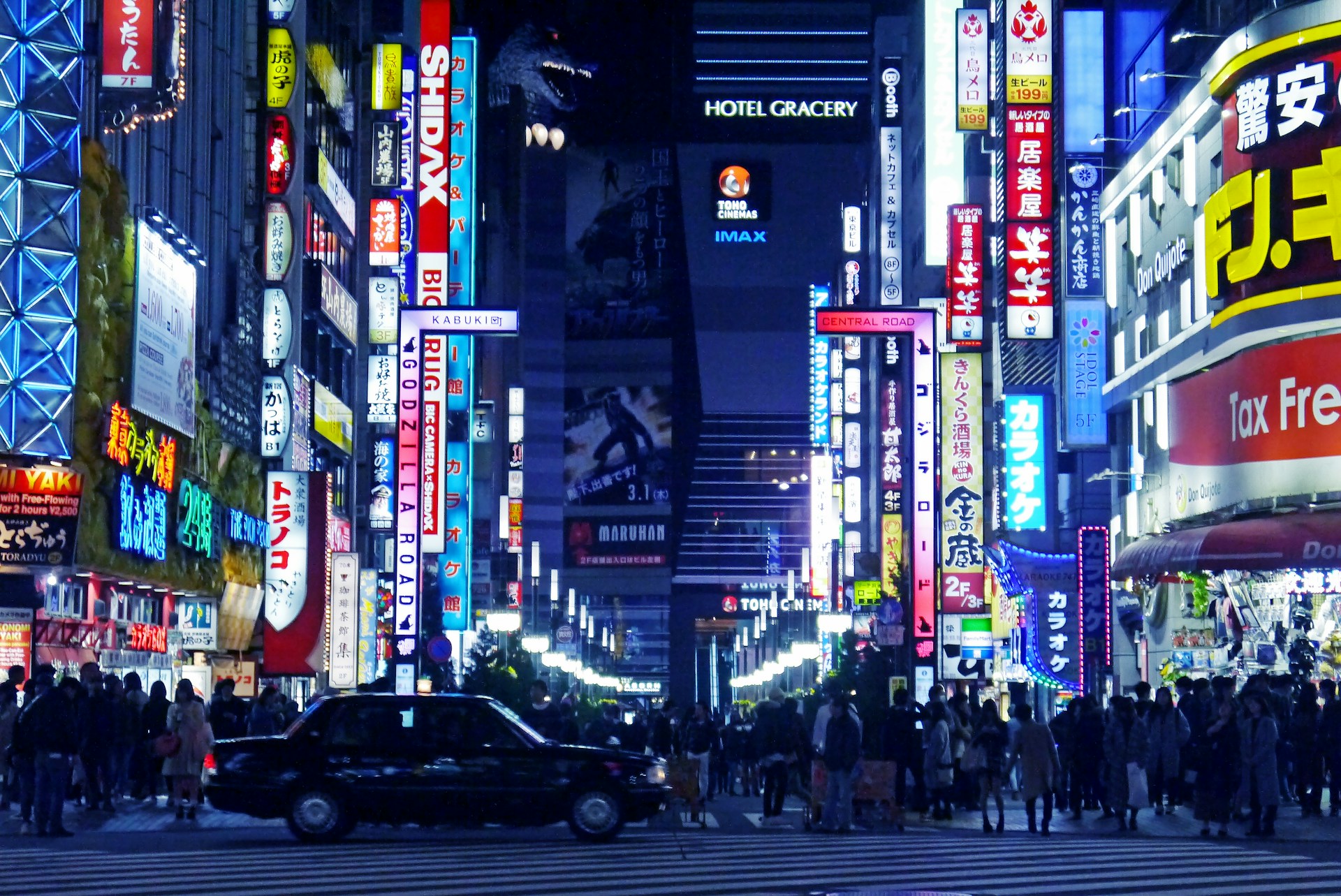
Kyoto
- Gion/Higashiyama: Historic lanes, shrines, morning walks.
- Kyoto Station: Convenient hub, easy day trips (Nara, Uji).
Osaka
- Namba/Dotonbori: Food heaven, neon nights.
- Umeda: Business district with excellent train connections.
Hokkaido (Sapporo/Otaru/Niseko)
- Winter sports, seafood markets, onsen day trips.
Fukuoka
- Easy hop from Korea, yatai street food, friendly and compact.
Room types: Business hotels (compact, clean), ryokan (tatami + onsen), hostels (social and stylish), serviced apartments (longer stays).
4) Getting Around (Simple & Stress-Free)
- IC Cards (Suica/PASMO/ICOCA): Tap in/out on city transit and some regional lines; top up at stations or convenience stores.
- Subways & JR Lines: Clear signage; English displays common in big cities.
- Shinkansen (Bullet Train): Fast intercity moves (Tokyo-Kyoto ~2h15m). Consider regional JR passes if you’ll ride multiple long segments.
- Buses & Taxis: Buses great in Kyoto/local towns; taxis accept card increasingly—line up at marked stands.
- Driving: Only if heading to rural Hokkaido, Okinawa beaches, or remote onsen areas; check international driving permit rules.
- Apps to keep handy: Offline maps, transit planners, translation.
Rule of thumb: For a 7–10 day first trip limited to Tokyo-Kyoto-Osaka, local trains + one Shinkansen round-trip often beat a full national pass.
5) Food Culture 101 (Order Like a Regular)
- Counter culture: Solo dining is normal at ramen, sushi, tendon, soba counters.
- Ticket machines: At many ramen shops, buy a meal ticket first; hand it to staff.
- Water/Tea: Usually complimentary; no need to tip.
- Quiet dining: Keep voices modest; phone calls outside when possible.
- Queues mean quality: Join the line, staff will guide you.
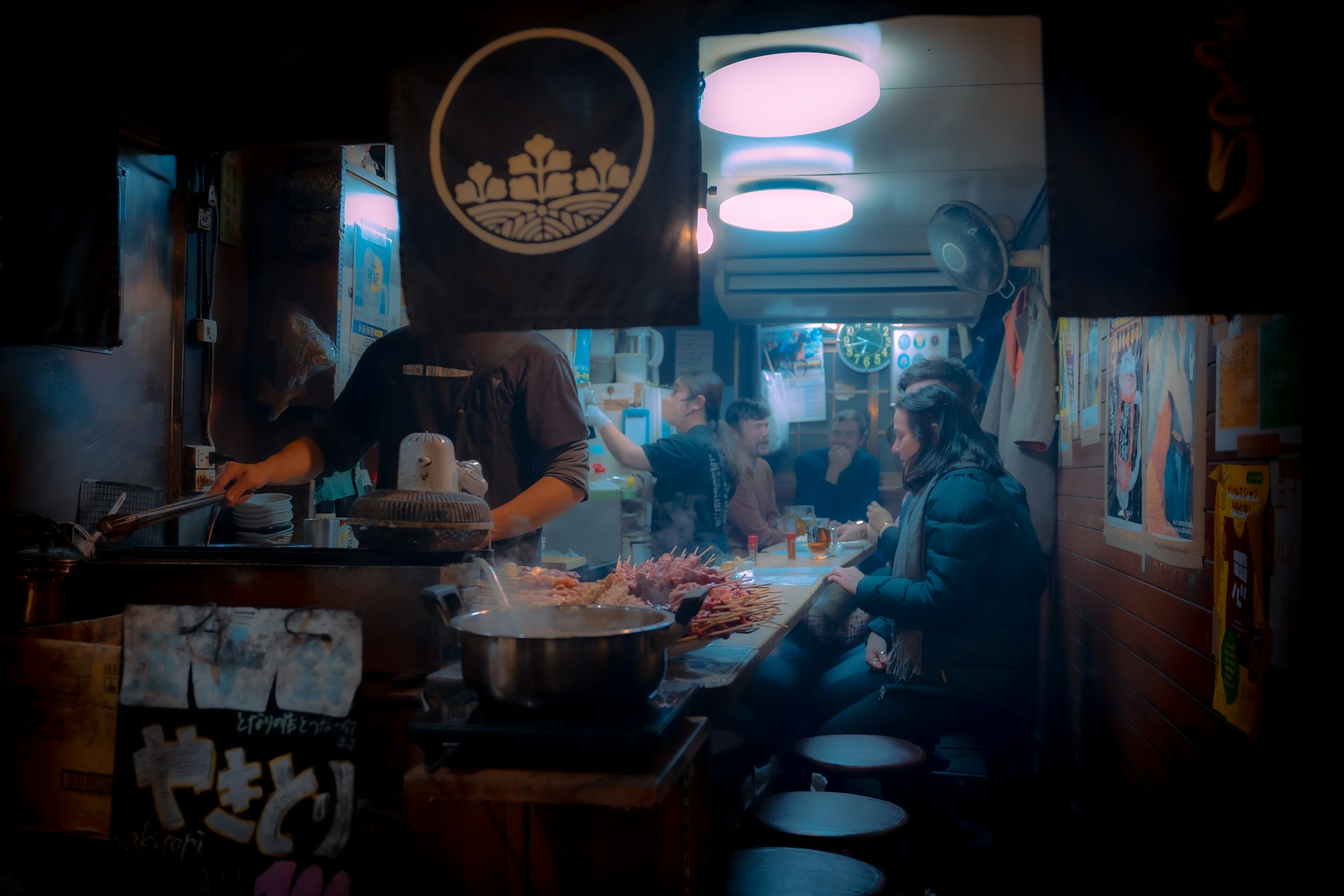
Must-Try Dishes by City
- Tokyo: Edomae sushi, tempura, monjayaki, soba, yakitori, kissaten coffee.
- Kyoto: Kaiseki, tofu cuisine, matcha sweets, yuba.
- Osaka: Okonomiyaki, takoyaki, kushikatsu, yakiniku.
- Fukuoka: Hakata tonkotsu ramen, mentaiko.
- Hokkaido: Soup curry, jingisukan (lamb), crab, dairy sweets.
Tokyo–Kyoto–Osaka Without Worry
Pick a plan sized for 7–10 days—maps, socials, and streaming covered.
Hunting “Old Shops” (老舗 / しにせ) Without a List
If you love storied eateries but don’t want to chase exact addresses, look for:
- Wooden façades, noren curtains, low signage.
- Words like “創業○年” or “老舗” on menus/plaques.
- Shotengai (arcade streets) and yokocho (alley clusters) near old districts (e.g., Asakusa in Tokyo, Pontocho in Kyoto, Shinsekai in Osaka).
- Depachika (department store basements) for heritage confectioners and bento counters.
Ask hotel staff for a nearby “shinisé” soba-ya or unagi-ya—you’ll get a local gem.
6) Experiences for First-Time Visitors
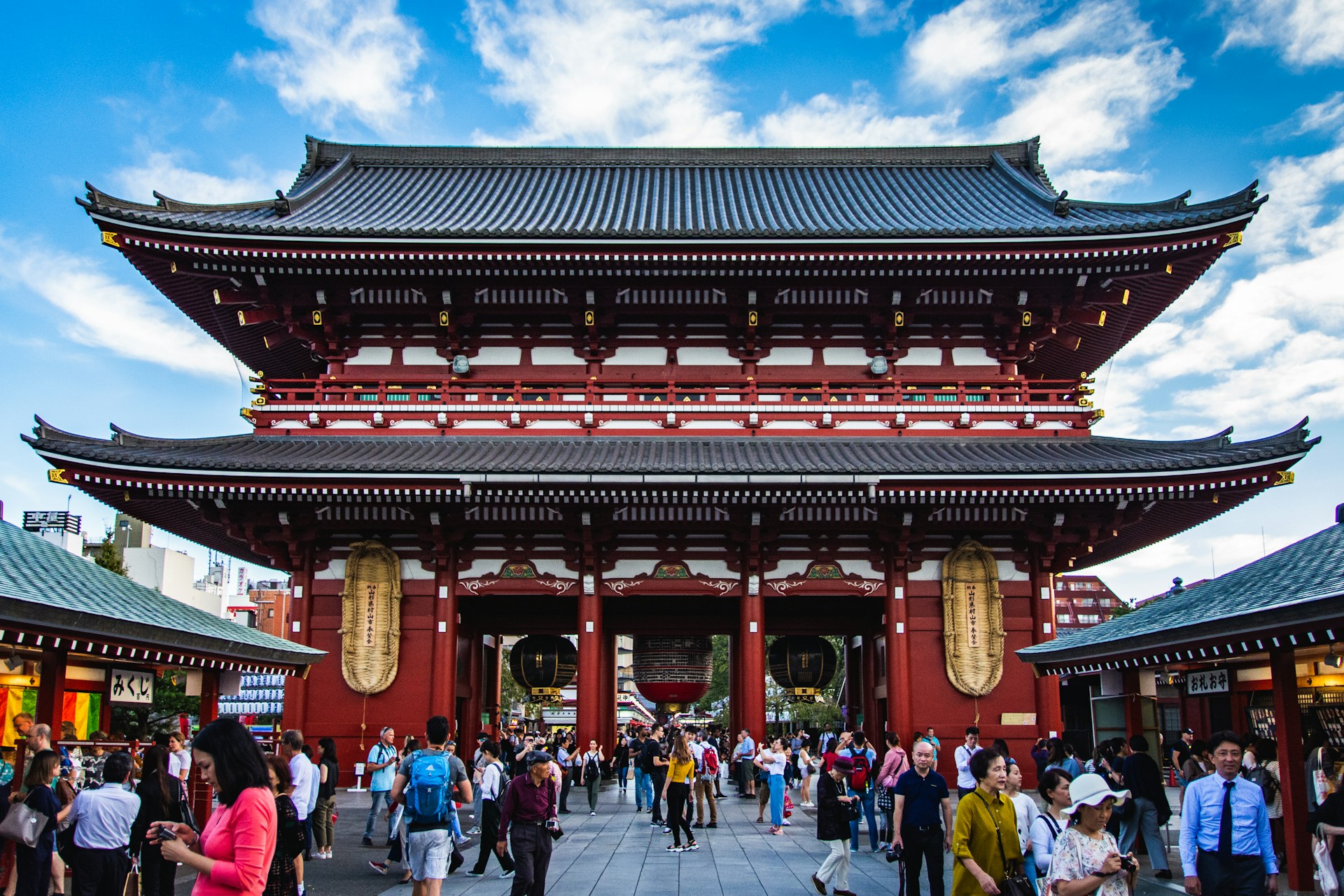
- Temples & Shrines: Senso-ji (Tokyo), Fushimi Inari (Kyoto), Meiji Jingu (Tokyo), Kiyomizu-dera (Kyoto).
- Neighborhood Walks: Yanaka (Tokyo), Gion (Kyoto), Nakazakicho (Osaka), Motomachi/Kitano (Kobe).
- Food Quests: Nishiki Market (Kyoto), Kuromon (Osaka), Omicho (Kanazawa), Hakodate Morning Market.
- Onsen Day Trips: Hakone, Kusatsu, Beppu, Noboribetsu (follow bathing etiquette).
- Pop Culture: Akihabara, Ikebukuro, Nakano Broadway, teamLab, Ghibli Park/Museum (book in advance).
- Nature: Arashiyama bamboo, Lake Kawaguchi (Fuji views), Nara deer, Kamakura coast.
7 Days: Tokyo + Kyoto
Day 1–3 (Tokyo): Shibuya/Shinjuku/Harajuku, Asakusa & Sumida River, Ueno museums, sushi or tempura counter, teamLab or Odaiba evening.
Day 4: Shinkansen to Kyoto, sunset at Yasaka Pagoda.
Day 5–6 (Kyoto): Fushimi Inari sunrise, Kiyomizu-dera, Gion lanes; day trip to Nara (Todai-ji, deer park).
Day 7: Matcha treats, Nishiki Market shopping, return to Tokyo or fly out of Kansai (KIX).
10 Days: Tokyo + Kyoto/Osaka + Fukuoka
Add Fukuoka for yatai nights and a Hakata ramen crawl; or swap Fukuoka for Sapporo if you’re chasing winter vibes.
8) Connectivity: eSIM Basics (No Store Runs, No Plastic)
- What is an eSIM? A digital SIM you install by scanning a QR—no physical card.
- Why for Japan? Immediate activation upon landing, strong network coverage, and easy top-ups.
- Korean travelers love it for seamless transfers (ICN/GMP → HND/NRT/KIX/FUK) and zero roaming shock.
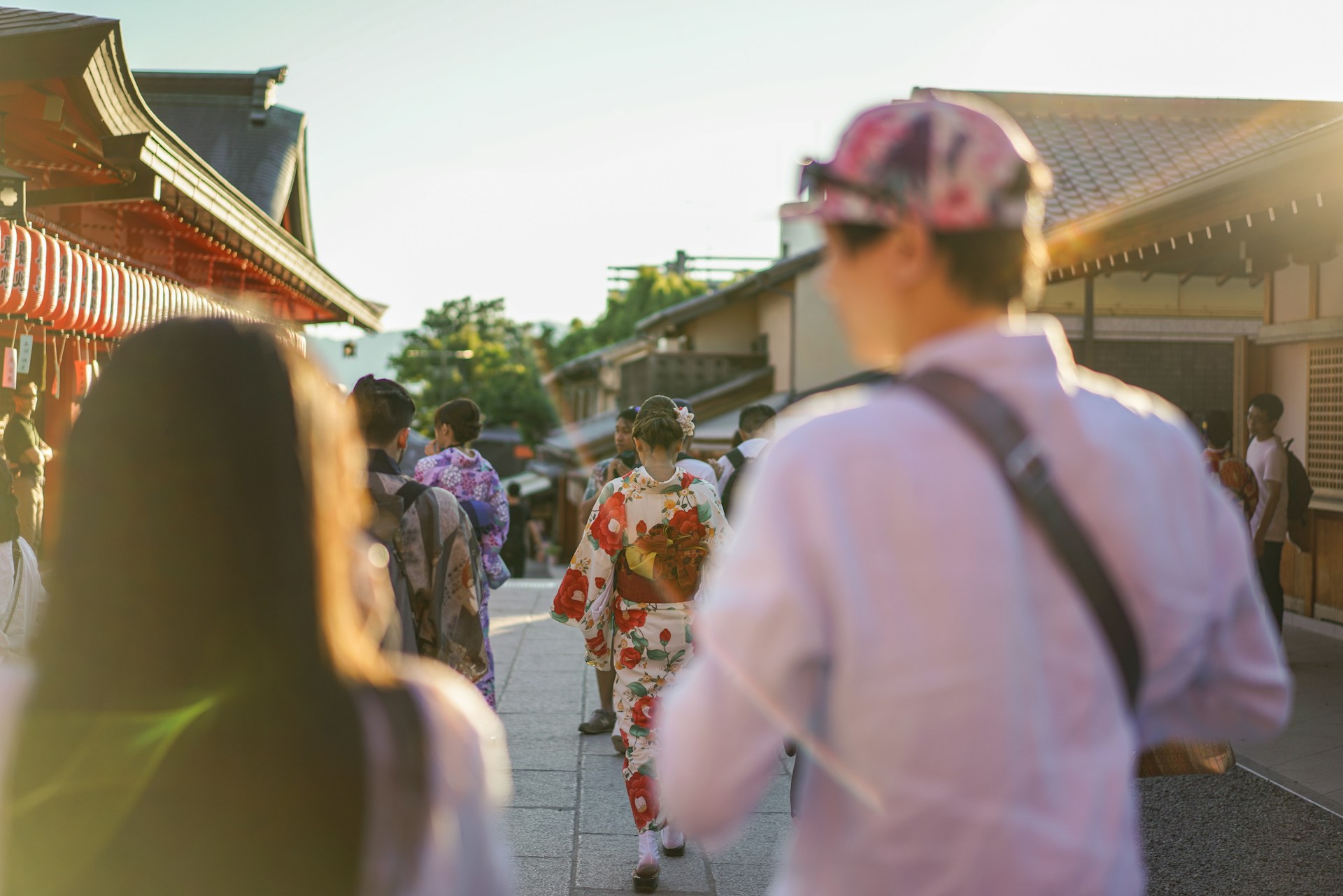
Japan eSIM from Voye Global
Stay online the moment you touch down—maps, reservations, translation, payments, ride-hailing, all set.
Why Voye Global
- Instant QR activation
- Reliable 4G/5G where available
- Plans for short hops or month-long stays
- 24/7 support
- Multi-country options if you’ll add Taiwan/HK/Thailand after Japan
Which Plan Should I Get?
Choose by trip length and data habits (video vs. maps/chat):
| Trip Style | Typical Use | Suggested Data | Suggested Duration |
|---|---|---|---|
| 3–5 day city hop | Maps, chat, light socials | 3–5 GB | 7–10 days validity |
| 7–10 days (Tokyo–Kyoto–Osaka) | Daily maps, socials, some streaming | 8–15 GB | 15–30 days |
| 2–3 weeks slow travel | Maps, food reels, cloud backups | 15–30 GB | 30 days |
| Work + travel | Hotspotting, calls, video meets | Unlimited Japan Data plans | 30 days |
Setup in minutes: Buy → Receive QR by email → On iPhone/Android, Settings → Mobile/Cellular → Add eSIM → Scan → Set data line → Turn data roaming ON in Japan.
Thinking beyond Japan? Pick a regional/multi-country Voye plan if your route includes Korea-Japan-Taiwan-Hong Kong or Southeast Asia.
9) Culture & Etiquette (Comfortably Polite)
- Greetings: Light bow or nod; handshakes are fine with foreigners.
- Trains: Quiet voices, priority seats for those in need, no open eating on local trains (Shinkansen bento is okay).
- Shoes: Off at ryokan rooms, certain restaurants, and homes—look for slippers.
- Trash: Few public bins; carry a small bag.
- Cash tray: Place/receive money via tray at registers.
- Photos: Ask before photographing people or in small shops/temples.
- Language: Simple English works in tourist zones; basic Japanese phrases help. Many signs have Korean too in bigger cities.
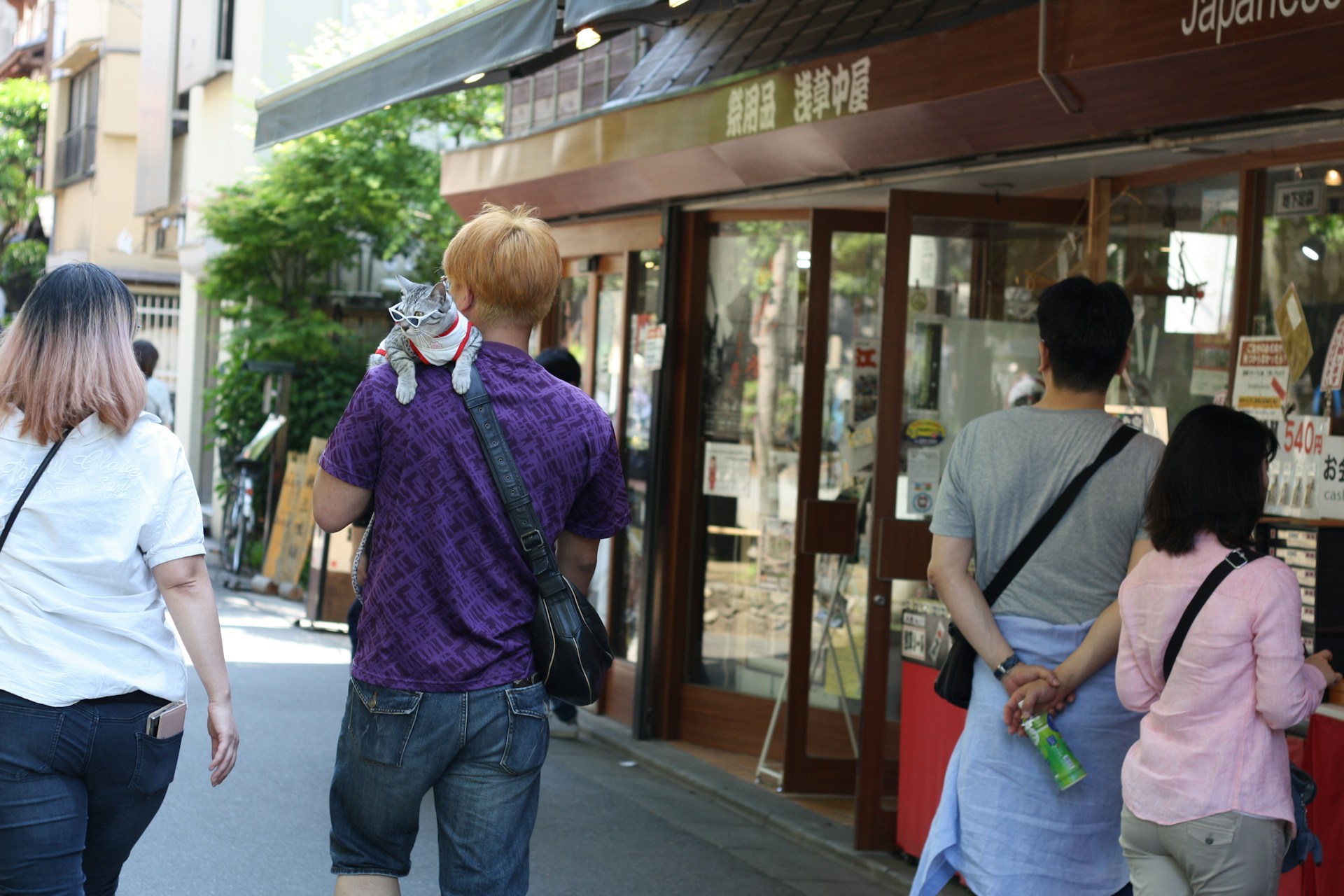
10) What to Expect (Realistic First-Timer Notes)
- Compact rooms: Business hotels are small but efficient.
- Lines: Popular eateries/attractions may queue; mornings are your friend.
- Luggage forwarding: “Takkyubin” can send suitcases between hotels—travel light on trains.
- Weather swings: Layers help in spring/autumn; summer is humid; winters can be dry and cold.
Hop to More Countries
One QR, multiple borders—choose a regional eSIM if Japan isn’t your only stop.
11) Korean-Specific Tips
- Power: Japan uses Type A plugs, 100V. Bring a Type F→A adapter; most phone/laptop chargers are 100–240V (check your brick).
- Roaming vs eSIM: Avoid bill shock; a Japan eSIM is simpler and cheaper than roaming packages in most cases.
- Food comfort: Many Japanese flavors feel familiar (rice, soups, grilled meats) with countless new tastes to try.
- Visa/entry: ROK passport holders have traditionally enjoyed short-stay, visa-exempt entries; always confirm current rules with official sources before you book.
12) Packing Essentials
- Lightweight layers, compact umbrella
- Comfortable walking shoes
- Small towel/handkerchief (useful year-round)
- Reusable bottle (fountains abound in parks/stations)
- Universal adapter (Type A), portable power bank
- Onsen kit: quick-dry towel, modest swimwear for mixed facilities (if applicable)
- Copies of bookings, IC/credit cards, a bit of cash
14) FAQs (Short & Useful)
- Do I need cash in Japan?
Yes—carry some for small eateries and shrines. Cards work broadly in cities. - Which eSIM plan should I choose?
Match data to your habits and trip length (see table above). Most first-timers do well with 8–15 GB for 10 days. - Will my phone work with eSIM?
Most modern iPhones/Androids support eSIM. Check your device settings for “Add eSIM.” - Can I hotspot with a Japan eSIM?
Yes, if your plan allows tethering (Voye plans typically do). Check the plan details. - Is English enough?
In major areas, yes. Translation apps and simple Japanese phrases help elsewhere. - JR Pass or point-to-point tickets?
For Tokyo-Kyoto-Osaka only, point-to-point often wins. For wider roaming (Tohoku/Hokkaido/Kyushu), evaluate regional passes. - Do I tip?
No. Exceptional service is standard; tipping isn’t expected.
16) Add-On: Rapid City Mini-Guide Cards
Tokyo (First Time)
- Base: Shinjuku or Shibuya
- Food: Sushi, tempura, yakitori, kissaten
- Musts: Asakusa, Meiji Jingu, Shibuya Crossing, teamLab
- Day trips: Kamakura, Nikko, Hakone
Kyoto
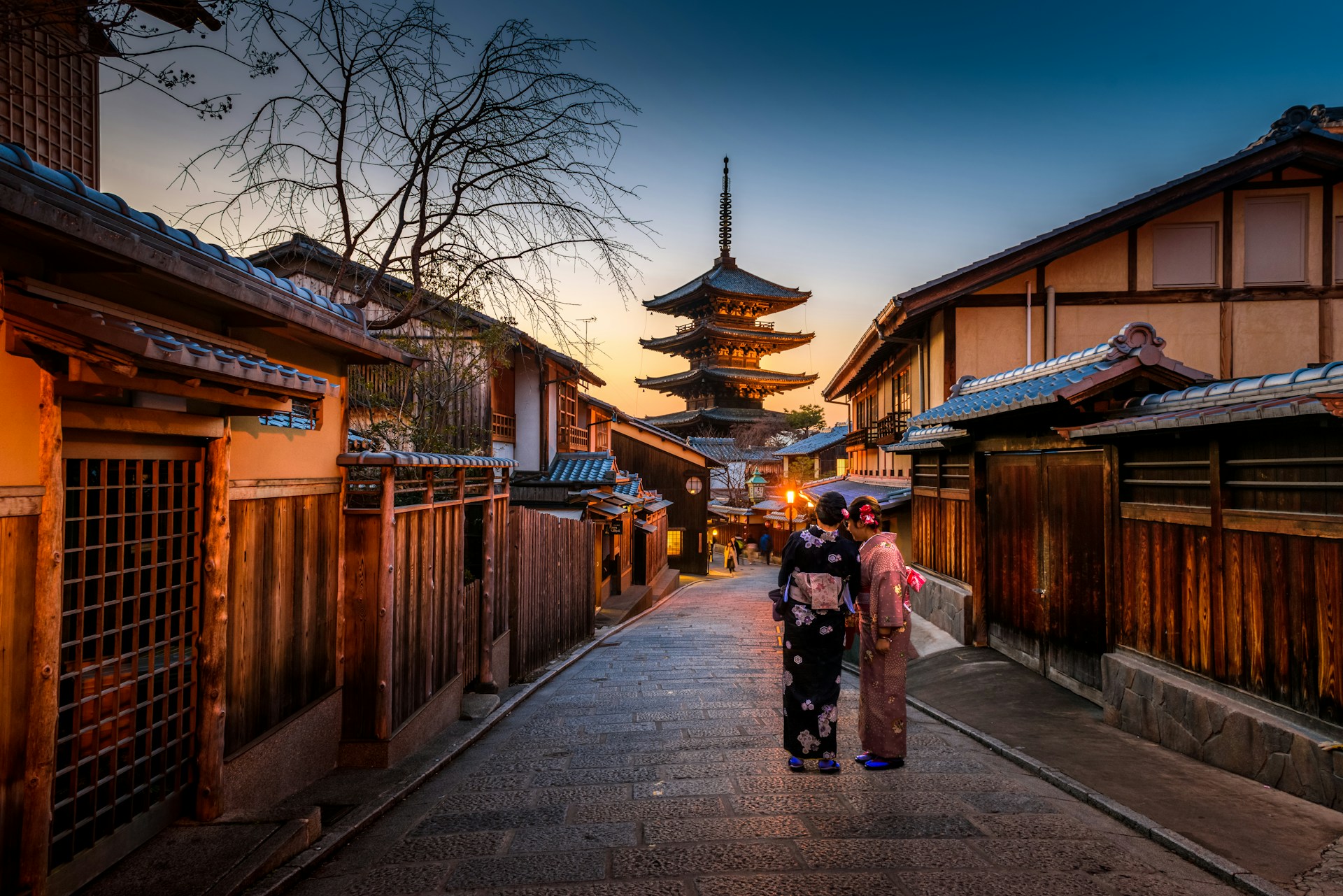
- Base: Gion/Higashiyama or near Kyoto Station
- Food: Kaiseki, tofu, matcha, yuba
- Musts: Fushimi Inari, Kiyomizu-dera, Arashiyama
Osaka
- Base: Namba/Dotonbori
- Food: Okonomiyaki, takoyaki, kushikatsu
- Musts: Dotonbori neon, Kuromon Market, Osaka Castle
Fukuoka
- Base: Tenjin/Hakata
- Food: Tonkotsu ramen, yatai nights
- Musts: Canal City, Ohori Park
Sapporo
- Base: Near Odori Park or Sapporo Station
- Food: Soup curry, crab, jingisukan
- Musts: Otaru canals, winter snow scenes
Ready to Travel?
Traveling from Korea to Japan has never been easier, and the experience is nothing short of unforgettable. From centuries-old temples in Kyoto to the neon brilliance of Tokyo and the food alleys of Osaka, Japan offers a mix of tradition and modernity that feels both familiar and refreshingly new for Korean travelers. With smart planning—whether it’s carrying the right amount of yen, picking a stay in the right district, or knowing how to navigate trains—you’ll find your trip seamless and rewarding. And by staying connected with a Voye Global Japan eSIM, you can focus less on logistics and more on enjoying the journey, knowing that maps, translations, bookings, and loved ones back home are always just a tap away. Whether it’s your first visit or a return trip, Japan will surprise, delight, and inspire you every step of the way.
Seamless Mobile Data Everywhere
